Table of Contents
Building a loyal, hungry base of customers is the ultimate goal of any business; however, in the world of fashion, customer retention is a massive area of concern for industry mainstays and budding brands alike. That’s why they’re paying special attention to social proof.
While the revenues of eCommerce fashion industry are expected to rise from $481.2billion in 2018 to $712.9billion by 2022, the concept of creating lifelong customers can be absolutely daunting. After all, new brands are popping up daily: meanwhile, trends change and even the most promising fits can quickly become flavors of the week.
So, how do you make long-term customer retention a reality in the incredibly competitive and crowded field of fashion?
Just as fashionistas want their pieces to pop out and grab the attention of passers-by, brands should strive to get in front of as many eyes as possible. In the digital age, this means getting into the newsfeeds of our potential customers and competitors alike.
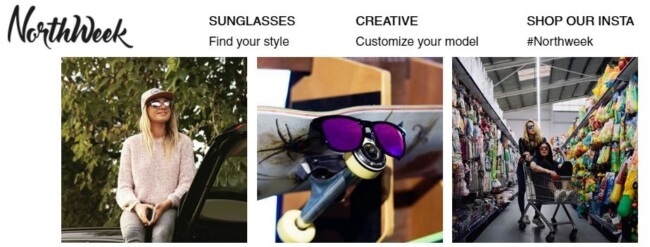
In an era dominated by social media marketing, there’s perhaps no stronger force than social proof when it comes to customer retention.
Social proof is much more than a buzz-phrase: representing arguably the most powerful psychological trigger in marketing, customers want to see their favorite brands on display to affirm their buying decisions and be part of the crowd.
Think about it: brands should be able to show their products off to the world versus simply telling customers that they’re worthy of attention. Additionally, consider the following as it pertains to modern buyer behavior:
The writing’s on the wall: the most powerful weapon in your marketing arsenal may very well be digital word of mouth and the social nature of your customers.
Likewise, brands such as Facebook have acknowledged the power of social proof through their “recommendations” feature. The more time our customers spend on the social network, the more likely they are to find our products via social.
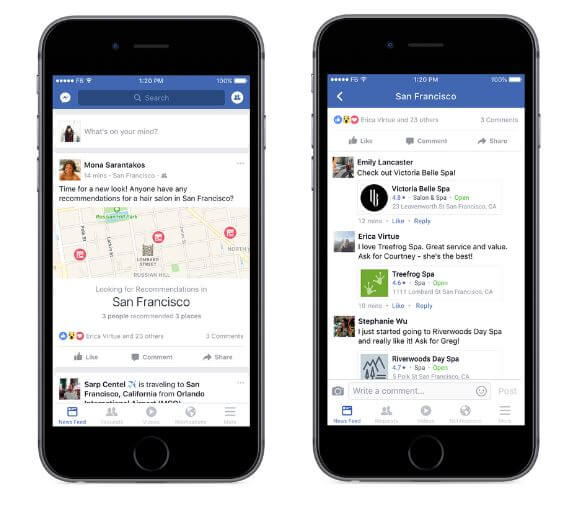
But will they find you?
Social proof for the purpose of customer retention comes in many shapes and sizes. Although you can’t force your customers to spread the word about your brand and its products, there are plenty of foolproof ways to encourage such behavior time and time again. Regardless of your audience, consider the following means of building social proof for your fashion brand. You can leverage social proof and User Generated Content via a UGC platform. Read on to learn more about UGC and just how crucial is is in the fashion world.
Fashion is all about visuals and aesthetics. Therefore, fashion brands should strongly consider a “show, don’t tell” approach to putting their products on display.
Through User Generated Content, you can leverage your existing customers and pique the interest of new buyers simultaneously. The beauty of UGC comes in the fact that your customers are doing the legwork for you.
Think that your customers aren’t hungry to share their photos and advocate for your brand? Think again. There are millions of photos uploaded to social media daily, many of which are being attributed to showing off fashion brands and their hashtags.
Likewise, brands can leverage their own hashtags. For example, Omoda uses customer photos from Instagram to put their unique brand on display:
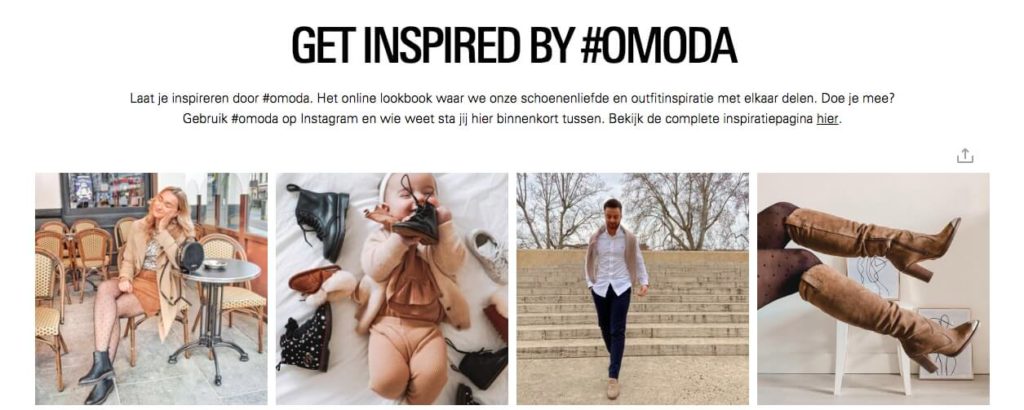
In short, a simplified UGC strategy would look like something like this:
Given that visual content is crucial to modern brands looking to tell their story and hold their visitors’ attention, UGC is a tried-and-tested means of helping build an authentic, emotional connection with your audience.
Sure, a picture of a pair of sunglasses on its own may not tell much of a story or grab your attention: however, paired with a setting and imagery, they seem more real to your customers. Similarly, check out how Folli Follie shows off their watches on real people (including customers) versus product shots to give their products a more personal touch:

So, what’s the link between User Generated Content and customer retention? Consider the following:
In fact, encouraging the creation of user generation content is perfect for customer retention, especially with a platform like Flowbox where you can use the analytics section to test the impact. After any purchase, you immediately provide your customers with an action to take to continue to interact with your brand. The more interactions, the better as you work to cement a stronger emotional connection between your brand and buyers.
Want to benefit from the power of UGC like many other fashion brands? Book a demo of Flowbox today and we will walk you through how it could be transformative for your brand.
Sometimes your customers need a bit of encouragement.
Despite popular belief, you can incentivize customers to market for you after they’ve clicked “purchase.”
Customer retention is about brand loyalty, and loyalty is built through continued communication with your customers. Just because a customer has purchased from you once doesn’t necessarily mean that they’ll purchase again without an extra push.
First thing’s first: you need to get your customers to follow you via social media. There are multiple ways to get your social channels in front of buyers depending on how they found you in the first place, including:

After all: once you’re in their social feeds, the sky’s the limit. Your options for engaging users via social may vary based on your products and promotions, but consider any combination of the following as a means of building some much-needed social proof.
Beyond a lookbook or UGC feed on your homepage, you can harness your hashtag to encourage buyers to tell the world about their recent buys. Check out this example from H&M, which accompanies the confirmation email of any online purchase:
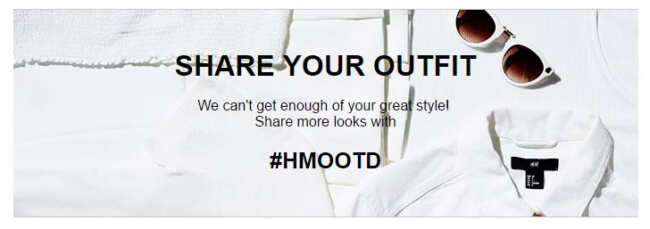
The #HMOOTD (H&M outfit of the day) hashtag provides a constant stream of Instagram activity for the brand and opportunities for H&M to get its fits in front of new buyers.
The more exposure your hashtag gets, the more eyes your brand gets in front of. In short, effective use of a hashtag may represent a potential snowball effect for savvy brands with dedicated customers.
In the world of fashion, you should strive to push products that are meant to be talked about.
On the same note, you should encourage buyers to share their potential picks or recent purchases by having the option on-site. You can include social buttons on-site which blast your product page to your ideal social media channels (Facebook, Twitter and Pinterest, for example). Additionally, you can only also integrate sharing options after checkout.
The following example from Lagos displays a subtle yet effective product page that allows visitors to share their shopping experience with the world:
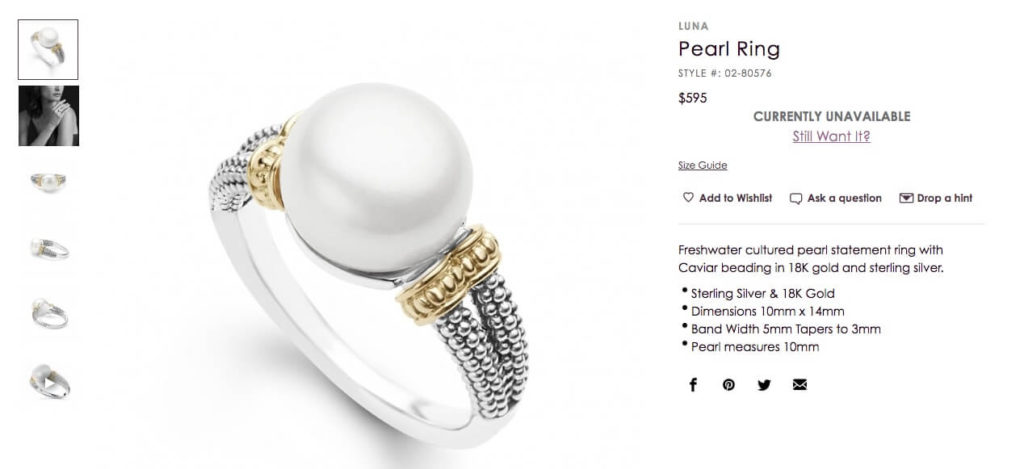
Satisfied customers are your best friends, especially when it comes to building social proof. Making the most of your relationships with such buyers is crucial to customer retention: therefore, leverage their positive experiences and put them on display for the world to see.
Encouraging reviews and testimonials is a surefire way to build your brand’s integrity, provide former customers a reason to return to you and create incentive for new business. How so?
Ratings and reviews break down the trust barrier for skeptics and first-time buyers: by seeing that your business and products have existing, positive feedback, your newcomers will be more likely to buy (especially since 93% of consumers say online reviews have an impact on their purchase decision).
Additionally, the more feedback you get on your products and store, the more you know what pieces are hitting it off with customers and which aren’t (see the example below from Beloved).
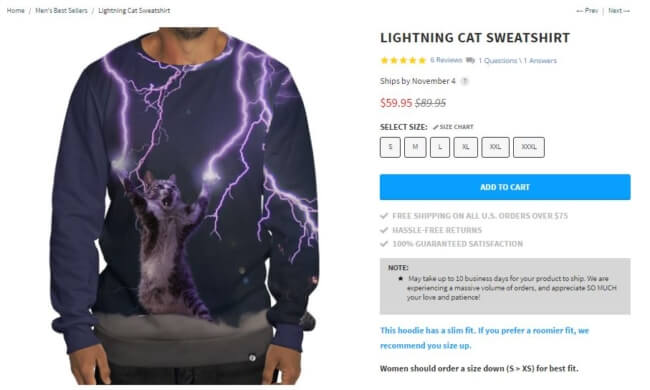
The question remains: how can you incentivize customers to review your products and leave positive feedback? While there’s no one-size-fits-all approach to soliciting feedback, any combination of the following is fair game:
Sometimes the ideal social proof for your brand is the kind that you ask for: in other words, don’t beat around the bush.
The best promotions you run are the ones that get your former customers coming back for more.
Using loyalty and referral programs are a no-brainer when it comes to customer retention. After all, consistent discounts are an added bonus if you already have a strong base of satisfied customers. If you’re looking for inspiration, check out some of the best referral code examples to see what works well in different industries.
For example, Modcloth boasts an “everyone wins” referral program in which both the buyer and referral receive a discount of $15:

Likewise, loyalty programs that provide deals and discounts for a certain tier of purchases (such as $10 credit for $100 spent or “buy five items, get one free”) serve as social proof by illustrating that your customers want to buy from you again and again. Loyalty is a huge component of customer retention: by giving customers what they want and saving them money simultaneously, they’ll fall in love with you over time.
If you’re curious about starting your own program, check out what competitors in your space are doing and make sure you don’t run any deals that will put you in the red.
Even if your brand doesn’t boast a blog, you should consistently be marketing your brand’s content to encourage social shares. In the case of fashion brands, your content is more than likely going to be visual, whether it be product pictures or images from photoshoots showing off your products in a real-world setting.
Social proof is a two-way street: although you want users to advocate for your brand, you must first advocate for yourself. Considering that sites that consistent create new content get exponentially more traffic and business, imagine how the same rules apply to eCommerce brands that consistently roll out new promotions, products and deals.
Think about brands such as Alex and Ani who are constantly coming out with new pieces to keep their brand from stagnating and encourage past customers to come through the door.
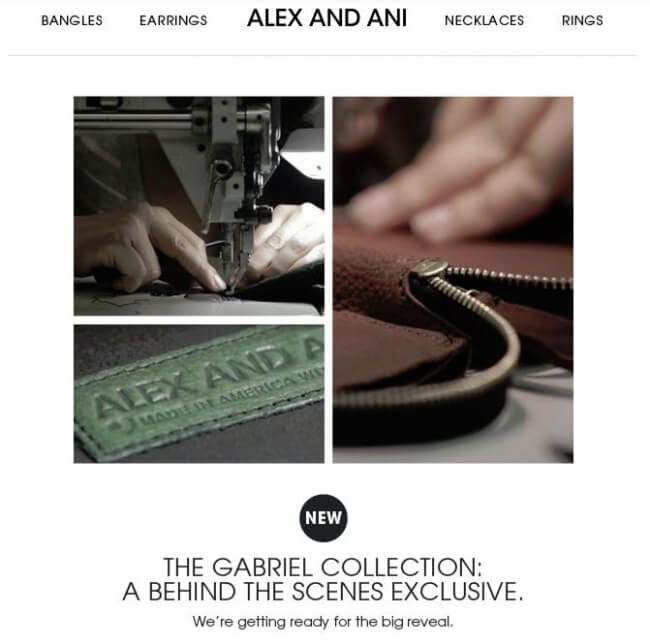
To remain buzzworthy, you need to stay one step ahead of the game.
What’s your next collection going to look like? What promotions are coming down the pipeline? What are you going to do to get users talking? By consistently pushing new products, you command a confident, more authoritative presence versus brands that are inactive and quiet.
If you want something, sometimes it’s best to simply ask.
If you represent a budding brand that’s desperate for social proof, you could always take the direct approach and conduct an outreach campaign among your past customers.
Start with your email list, previous buyers and social followers and consider exposure, deals and discounts in exchange for a shout out or a place in your lookbook. Such outreach is a win-win situation for your brand and its customers: you have examples of your products in action and your customer feels a stronger connection with your brand as you put them on display.
Social proof is a proven element of higher sales and satisfied customers. Therefore, you should do everything in your power to encourage your customers to put your products on display for you. In the era of increasingly social shoppers, customer retention quickly becomes a game of who’s getting the most buzz.
Brands should strive to encourage the creation of UGC and have a hashtag handy to encourage customers to spread the word about their products. Especially in the world of fashion, imagery remains an incredibly component of any content marketing strategy. By consistently giving your customers a reason to engage and reengage with your brand, either through a loyalty program or giveaways, you provide a reason to keep them coming back for more.
Beyond social proof, what customer retention strategies are working for you? Let us know in the comments below.
Why not check out how to increase your eCommerce conversion rate using UGC.